I need any info relating to the installation of the pin-beading on the convertible top on a 1960 XK150 DHC. I have the kit which includes the long pieces of lead? and nails, I need help with the correct way to insert the nails and the correct steps in doing this process to end up with a nice chromed piece that will fit to the top and of course look great. One other problem I am having is installing the side glass in the doors. Not sure it I have everything needed to do this, would love any illustrations that show the view of the inside of the doors and the window mechanisms. I would appreciate any calls or emails reagarding these two matters. Call 605-335-6066 and ask for Nancy or Ennis.
Submitted by SE21-35014J on Wed, 03/23/2005 - 17:42
Submitted by jagwillie@ids.net on Tue, 03/15/2005 - 17:08
Pin-Beading on convertible top for 1960 XK150 DHC
Nancy,
If you give me a call, I'll go over some of the basics and get your address for a set of instructions.
Bill Bassett
Submitted by SW03-09811 on Tue, 03/15/2005 - 15:12
Pin-Beading on convertible top for 1960 XK150 DHC
Nancy,
Pin beading derives its name from the fact that it is held in place by pins attached to its back side. The standard material is lead-filled half-round brass, or possibly copper, tubing. The ends are normally rounded and tapered to fit flush with the hood fabric.
I have assembled some beading on a couple of occasions but am by no measure, "experienced".
The beading is normally delivered in its basic lead-filled unplated form. It is first shaped/bent to fit the area to which it is to be attached and the ends finished. Thereafter, the "pins" are fitted.
The pins themselves are 3/4" x 17 brass nails or something similar. The pins are located, perpendicular to the flat side, about 4" apart and are soldered in place after first drilling a small "locating hole" in the lead filling.
The beading is then brought to the chrome-plater with strong admonitions to not change its shape.
Installation, of the curved sections, is dificult since the associated wood backing is hard and the pins may bend. Use of a wooden or plastic mallet is recommended and pre-drilling pilot holes may be necessary.
Good luck,
Dick Cavicke
Submitted by tim_inks@hotmail.com on Wed, 03/09/2005 - 10:05
Pin-Beading on convertible top for 1960 XK150 DHC
I'm sorry I can't help you with your question, but you might want to try asking at the Jag-lovers forum. The XK group there seems to be quite a bit more active than this one. (Too bad, as I much prefer the format and layout of this one!)


I am currently in the process of installing/replacing the pin-beading on the front edge of the top of my XK-140 OTS. After two failed attempts at trying to use the purchased "straight stock" ie.lead-filled 1/2 round brass tubing -(the first was 6 inches too long & after modification, the weld broke while forming it to the proper shape to fit, and the second was 1/2+ inch too long - which I did not discover until I started to form it to shape -plus several of the nails were loose.) I am trying an idea suggested to me by Bill Terry (of "Bill Terry's Jag. Parts") I found a local machinge shop who could take a 3/8's inch diameter solid bress rod (carefully measured to the proper length needed) and mill it down to a 1/2 round (looks like the lead-filled brass tube except that it is solid brass)and finished off the ends to match the original piece. They then drilled several holes 1/2 way thru the rod from the flat-side at 4-6 inch spacing and tapped the holes to screw in 4x40 screws. Using SS "screw stock" cut to 3/4 inch length & leaving just enough thread intact to screw firmly into the tapped holes, the threads of the remainder (or exposed part) of the short pieces of the "screw-stoch" was ground down to form a SS "nail". Although I have just received the finished "1/2 round" Brass rod with"screw-nails" in place, I can already see the advantage of this System. *Each piece can be made "custom length" for your need; *the nails are Stainless Steel and harder; *they can be removed so that it will be easier to shape the piece to the car prior to Chroming; *the solid Brass 1/2-round rod will be stronger and less likely to be bent out of shape during the Chroming process; and *if a "nail" is bent during installation it will be easy to replace. Bill Terry suggested using "highly-polished" SS rod rather than Brass and that way you don't have to worry about a Chrome shop screwing up or bending your piece. The machinge shop where I had the work done suggested using Aluminum (easier to mill to the proper 1/2-round shape and cheaper) and having it Chromed -but I'm not sure how that would work -(??too soft) but easier to shape. Since I can (with my application) I plan to use a "ratchet-type wood clamp" (from Lowes or Home-Depot) to "squeeze" or press the "nails" into the wood -better control and less chance of damage to the chrome or bending the piece or nails -than hammering. If interested in the name/phn.# of the machine shop where my work was done -contact me at jerlynn2 msn.com, -though any precision machine shop should be able to do this job.
msn.com, -though any precision machine shop should be able to do this job.
Jerry Ellison
Fayetteville, NC
XK140 OTS